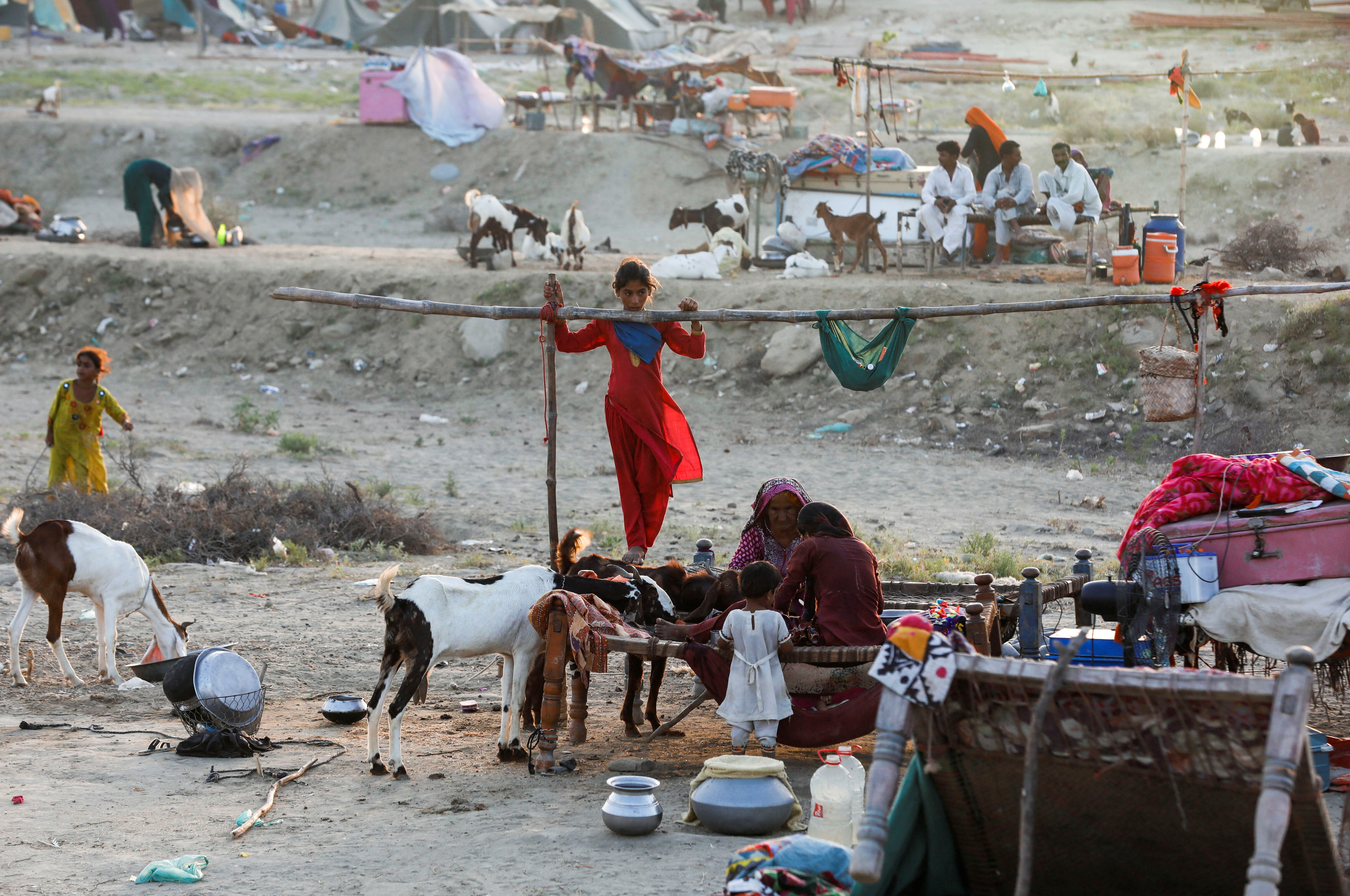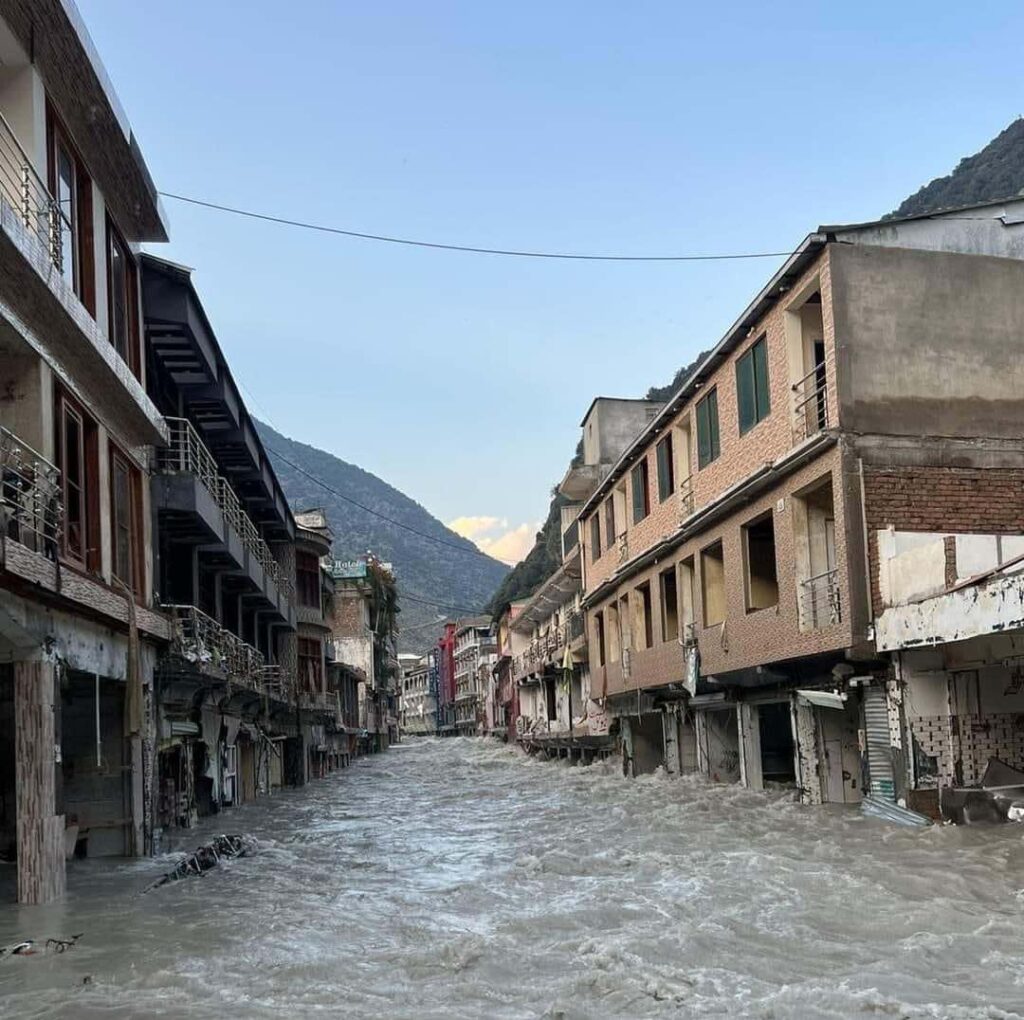As fate would have it, and pretty much like every other country in the world, Pakistan has been having its fair share of disasters since its inception. From insidiously developing epidemics to sweeping floods and devastating earthquakes, we have had it all. And whenever such calamities ensue, human life is affected, resulting in profound misery, which is both short-term and perpetual in consequences.
As a Physician who has worked on the ground in different disaster responses in Punjab, I will reflect upon my experiences in the Govt healthcare sector and shed light on the four cornerstones for disaster management, namely Prevention, Preparedness, Response, and Recovery. In addition, I will suggest changes that could make our responsiveness more efficient.
During my Internal Medicine residency years, there happened to be these catastrophic floods in Pakistan, which affected the Indus River basin. Killing 1700, with 20 million people affected and billions in damages. The effects of floods are immediate and long-lasting as far as human health is concerned.
Immediately, there is a loss of life followed by several outbreaks of infections and a lack of access to healthcare for chronic disease patients. And the very same happened during these floods. I happened to be part of a team that was sent to flood-affected areas in Southern Punjab as a public/NGO partnership.
In addition to destruction due to sweeping waters, there was an appalling state of overall health infrastructure. Makeshift camps were arranged in different public schools where we diagnosed and dispensed medication, which was donated by NGOs/individuals in Lahore. Not only were we seeing all sorts of skin, gastrointestinal, and respiratory diseases, but also nutritional deprivation.
People who could barely have access to any nutritious meal were now having to cope with different ailments. There were patients with chronic diseases on maintenance medication (already irregular), such as Diabetes Mellitus, hypertension, and epilepsy. All these patients had to line up in hot & and humid conditions in the corridor of shabby buildings serving as makeshift medical camps, wanting to inquire whether they had the medication that they needed.
It was a few sultry days of camps at different locations. We were informed that some local medical students were coordinating with local medical relief activities for flood victims through their initiatives. This was truly heartening to observe; we covered different locations in the cities of Kot Addu and Muzaffargarh while our medication stocks lasted.
It was as if we had hardly skimmed the surface of the medical disaster that was enfolding. Infectious diseases of the skin, gastrointestinal, and respiratory tracts were rampant, water-borne diseases, and even snake bites. The local health authorities were unable to address these emergent medical issues, citing multiple problems like medical staff shortage, limited medical supplies, without proper logistic support.
The gravity of the situation was that an already underprivileged, undernourished population was subjected to humanitarian crises and, in a way, abandoned by those concerned.
Health calamity aside, the availability of clean drinking water and hygienic food was a rarity, which brings to light the plight of the unfortunate people.
We managed to spend a couple of nights in the rest house, which was arranged by our ‘well-connected’ Professor and Principal. We returned to Lahore after the whirlwind medical camps. On my way back, I thought about the misery the local people were going through. But mind it, it was something building up for decades. The neglect of appropriate health care, non-availability of clean water and food over the years, served as fertile ground for the current health emergency in the area.
We have seen how devastating nature can be, even in current times, where the well-developed housing societies in major cities were swept away and precious lives were lost. Having said that, this does not exonerate them responsible of their responsibilities. While climate change is a reality and ravaging nature generally thinks little of even the most stringent of preventive measures but it does signal alarm bells as to where we are standing in mitigating the healthcare fallout.
I shall discuss the four milestones I pointed out at the start of the article, considering my experience in the Healthcare sector, and provide suggestions to improve service delivery. Although the scenario mentioned is related to a natural disaster, the suggestions hold validity in cases of standalone disease epidemics as well.
Prevention: The Health System’s Response Beforehand
We have a water problem in our country where every year during the monsoon, we run the risk of being swept away figuratively. Climate change and no new dams to store the excess water, plus deforestation, are key reasons. While talking about those aspects is beyond my expertise as a Physician, what I can reinforce is fortifying the health system’s response beforehand.
Knowing the burden the natural disasters create suddenly for the health system, our preventive efforts are always found wanting. Our low Health budget (1.2% of GDP) speaks volumes in this regard. Limited financial resources limit the hiring of staff, the purchase of essential medication and equipment, and the creation of dedicated surveillance bodies for coordination of preventive efforts beforehand.
While you might allude to the National and Provincial disaster management cells, which are already in place, what I am referring to is dedicated groups of appropriately qualified and experienced professionals who would ensure preparedness of the health sector in every province, especially the high-risk areas. Knowing that there will be water-borne diseases, snake and scorpion bites, and cases of drowning, will it not be feasible to ensure preparedness beforehand, at least at the district level?
Making anti-venom and other essential medications for diseases because of disasters, availability of extra beds in indoor departments of hospitals, all beforehand, can mitigate the morbidity and mortality suffered by hapless human beings.
It is easier said than done, one might argue that you cannot fight against nature, but that
does hold but; every human life is precious and utmost efforts must be made to preserve
life. It starts with adequate financial appropriation. Lawmakers hold the key and should take responsibility for raising their voice in this regard.

Solid Preparedness: No Knee-Jerk Reactions!
The Federal and Provincial disaster management cells should take more responsibility in
surveillance and action rather than just knee-jerk reactions in damage control. However, the response of the surveillance and action task forces formed at the Federal and Provincial levels during the COVID-19 epidemic must be acknowledged, where they appropriately gathered data and advised lockdown and further actions accordingly.
The same should be applied to recurring disease outbreaks like Congo fever, Naegleria fowleri (brain-eating ameba), where preempting should be the name of the game. Training and preparedness of healthcare staff for different situations are direly lacking in our
country. Although we might be having highly skilled Consultant Physicians running programs who have expertise in say infectious diseases, we do not have that skill and knowledge seeping into the system at the ground zero.
But it is not as though there has not been any effort made in this regard. As an example, during my residency period, 2011 to be exact, there was a significant dengue outbreak in Punjab. The provincial and district governments carried out massive crackdown efforts to minimize pooling of water on the roads, gardens, tire shops, etc.
The WHO also stepped in and took the initiative, along with leading Govt tertiary care hospitals to train residents regarding the management of Dengue fever, especially Dengue shock syndrome (DSS), which was being mismanaged, and casualties were reported.
I was part of the TRAIN THE TRAINER program and was sent to a peripheral part of the district to make General Physicians aware of the international protocols of management of DSS. However, this can be considered a knee-jerk reaction to the situation spiraling out of control. The authorities are aware of the looming devastating potential of viral diseases like dengue and Congo fever (during and after Eid-ul-Adha).
It would be wise to utilize the services of the highly trained and skilled doctors in teaching
hospitals in the provinces, where every year, with the coordination of the National and Provincial control centers, they are trained concerning expected outbreaks beforehand.
Selecting a group of doctors from different hospitals every year who have essential skills and knowledge to impart to the grassroots health care providers. A rotation policy can be adopted where different groups are selected every year, and local health administrations can ensure compliance, not only on paper but in a true practical spirit.
What I feel most deficient in our medical college curriculum is the preparation of health care providers (HCPs) to face disastrous situations, be it disease epidemics or natural disasters. The direction in which the world’s weather is headed, these floods and quakes are going to be a part and parcel of the future. Plus, antibiotic resistance and emerging lethal strains of viruses will always be a looming threat.
HCPs are given skills for basic and advanced life support throughout their careers; however, the approach to health issues arising during disasters is something that should specifically be taught at the undergraduate level. This should be reinforced during post-grad training, and those who pursue careers in trauma and ER should be further taken up the ladder of competency and skills.
Diseases and health-related situations during floods and earthquakes should especially be focused upon so that every HCP is skilled either to take part in the response or train others if needed. In addition, having a disaster coordination cell in selected district-level hospitals will be useful. Having drills to assess response capability should be conducted on a scheduled basis.
After so many decades of inception, and after so much pain, suffering, and grief at the hands of repeated natural disasters, we still are in our infancy as regards appropriate health care sector responses during disasters.

Why are we lacking in Disaster Response?
Deployment of logistic services at the right time is of utmost importance. Helicopters,
ambulances, and mobile health units, all of which should be, as previously alluded to, procured in inadequate numbers beforehand, and capabilities assessed during drills.
Hapless people drowning in floods not being rescued due to lack of logistical resources or more avoidable delays, is not an acceptable alibi. Rescue operations should not only be conducted by military or paramilitary personnel, but rather they should be jointly carried out with trained civilians who work under the umbrella of the Federal and Provincial disaster management cells.
Talking in terms of the insidious epidemics we have been fighting against, such as polio, we have been able to curb the disease, but at a significant cost of life of those involved in surveillance programs. Being a developing country, we have put up a tough fight against the scourge of viral diseases and national disasters. However, our most vile enemy is from within, which has tainted our disaster management responses, corruption!
Recovery: Unbelievable Stories of Corruption and Deceit in the International Aid We Received
Every disaster has a start, a peak, and a sloping or abrupt end. In the aftermath of it all comes the recovery phase, which is even more demanding. It requires a determined administration, plenty of resources, and most of all, honesty. Whenever there is a health-related emergency globally, especially in third-world countries, the developed world is quick to offer aid and assistance either directly or through the WHO and related agencies. It has been no different in Pakistan.
Unfortunately, our recovery/control efforts concerning the aid we have received have been plagued by unbelievable stories of corruption and deceit. The Kashmir earthquake (7.6 magnitude) wreaked havoc, killing around 73000 people and displacing millions. The international aid response was heartening and generous, with around 6 billion US dollars pledged.
However, the funds were misused through siphoning them to local contractors, politicians, ghost beneficiaries, fake compensations, and contractor fraud, such as faulty substandard reconstructions. The embezzlements have been alluded to in the 2006-2007 Auditor General reports.
The tales of corruption are not limited to national disaster recovery efforts. The HIV/AIDS
program, especially during its infancy in Pakistan, suffered the same ills. HIV/AIDS is a
concentrated epidemic in Pakistan, which means that it is limited to the high-risk groups, such as IV drug abusers. This does spill over to the general population when the affected people increase. For Pakistan to combat this, numerous international organizations poured in ceaseless funds ( i.e, WHO, Global Fund, UNAIDS).
However, as the tale repeats itself in a loop, millions were embezzled in the provincial and national AIDS control programs. Fake NGO’s, diversion of funds, procurement frauds, you name it, we did it. Although the AIDS control program has eventually been able to build a robust response with checks and balances, obviously, with the international donors now more vigilant and scrutinizing every pill and service provided.
With all that said, it would seem too academic and routine to mention the steps on how to ensure that the healthcare sector’s responsiveness to emergencies is swift and smooth. The following steps should be implemented (may sound too idealistic based on the past)
- Effective oversight of the National and Provincial disaster management cells
- Cutting off political intervention in response programs
- Reduce the hurdles of complex bureaucracy procedures for implementation aspects in
healthcare programs. - Meticulous accountability of organizations receiving aid.
- Medical curriculum amendments regarding healthcare emergency response.
- Use of the latest tech, such as drones with thermal and infrared imaging during search and rescue missions and food/ration delivery.
The above may sound too impractical, considering how frequently we unearth corrupt practices in departments where we would least expect considering precious lives involved. But it is what it is, and we must have a resolve and direction. It will take time and dedicated, honest people working in unison to ensure that we are truly ready to face health-related emergencies and disasters in the future.
More from the Author: Love-Hate Relationship between the Gut Microbiota and the Brain

Dr Syed Hunain Riaz is a Physician with expertise and experience in Endocrinology & Metabolism with a passion for eliciting change through the dissemination and application of precise knowledge. He is a space enthusiast, avid reader, blog writer, amateur photographer ( Astro & every day), and gamer.
Writing interests include preventive & lifestyle medicine and psychosocial issues. Dr. Hunain believes in limitless creativity and productivity of the human mind. Nature of consciousness, reality, and patterns in the universe are areas of special interest. He can be reached at syedhunain@gmail.com

